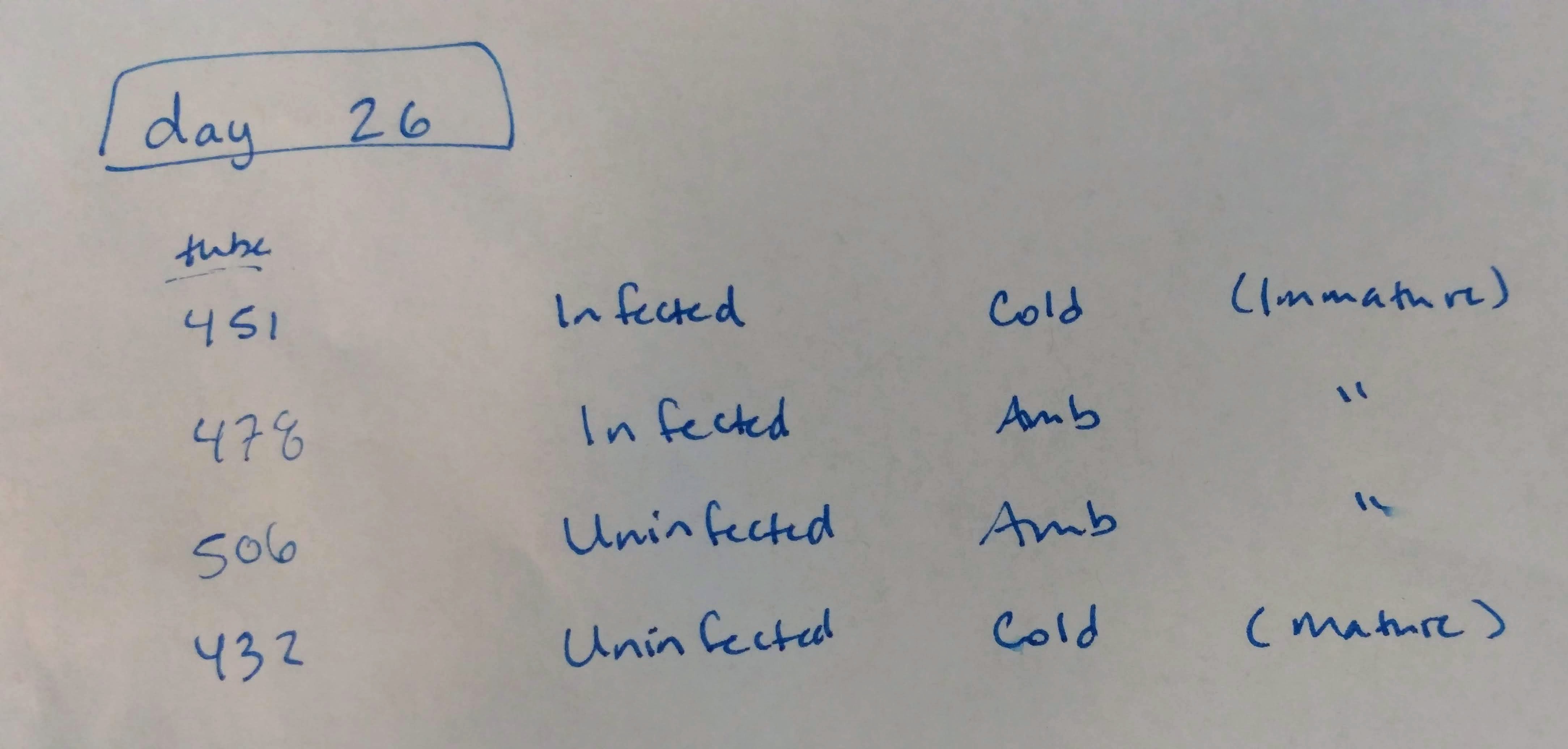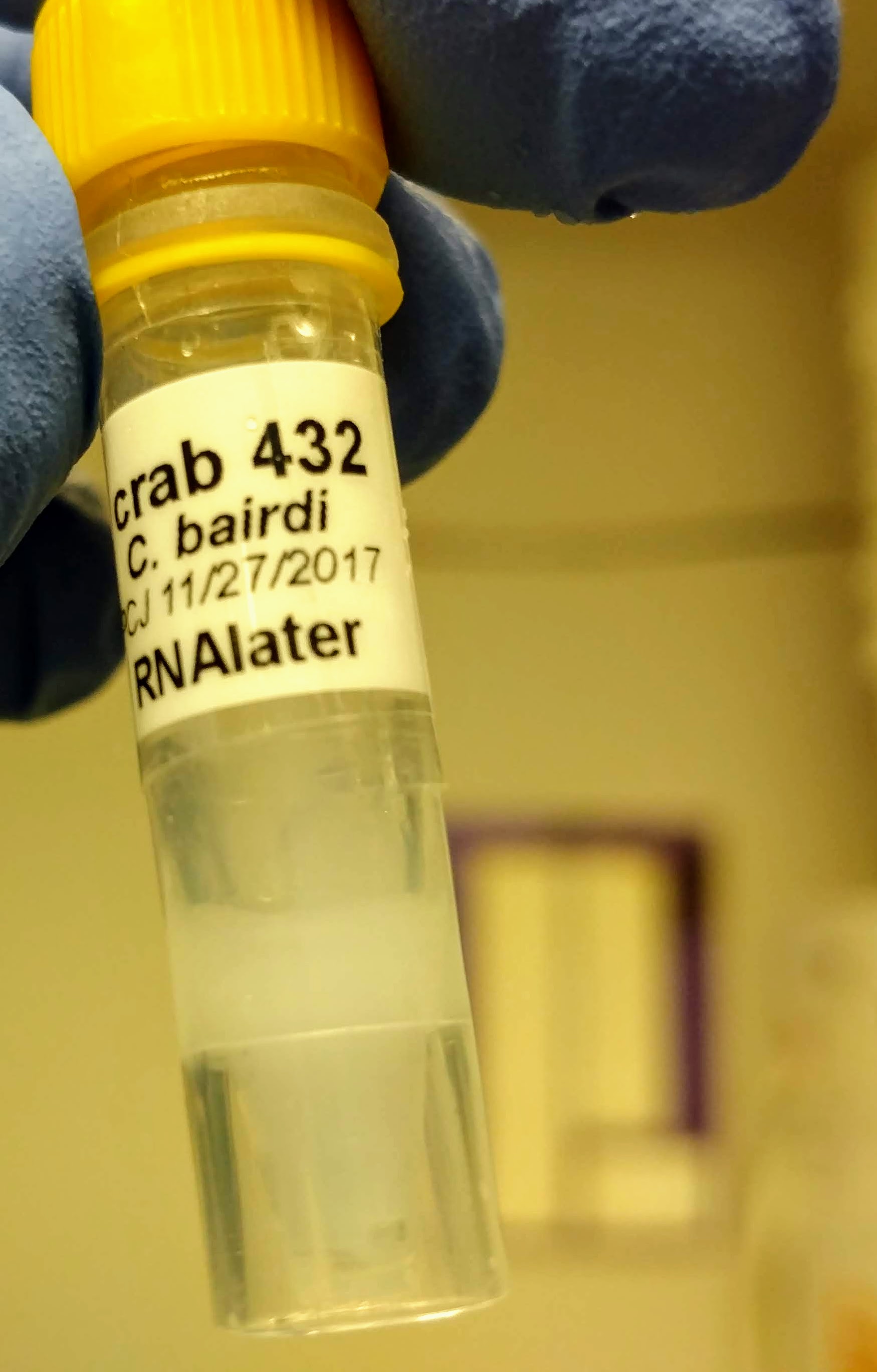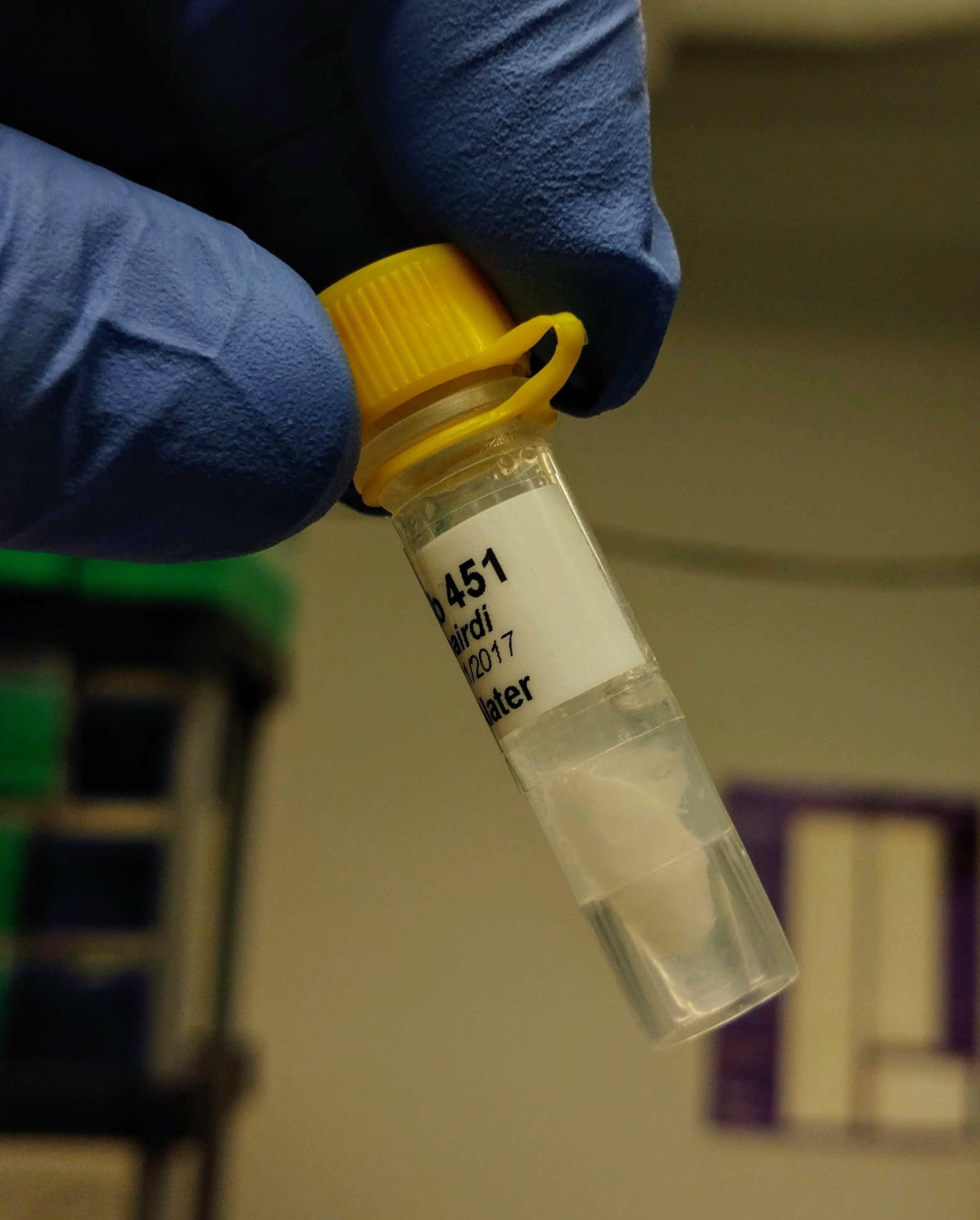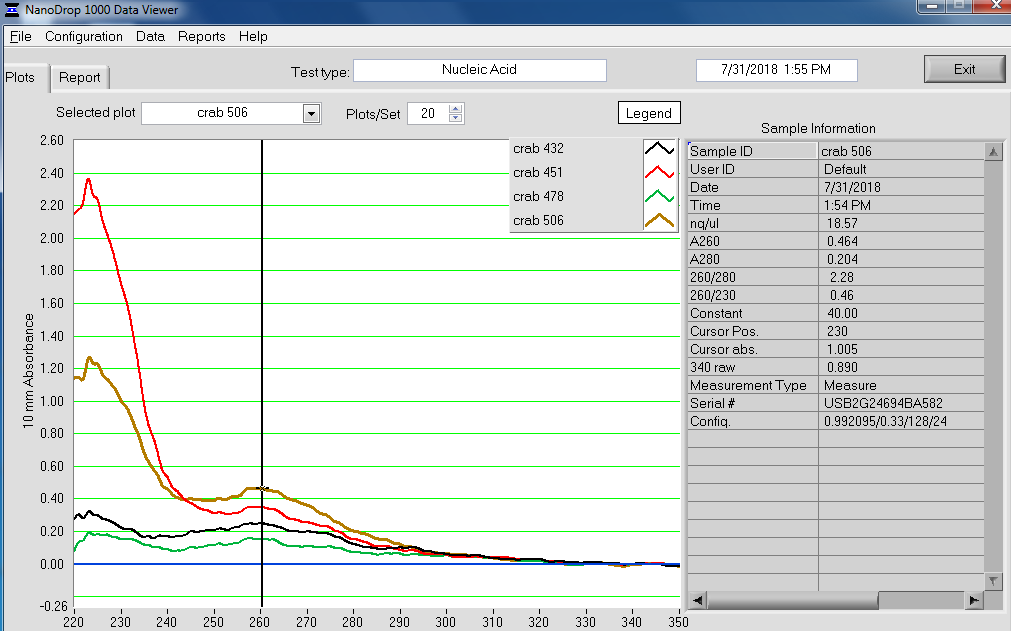In a continued attempt to figure out what we can do about the tanner crab RNA, Steven tasked me with using an RNeasy Kit to cleanup some existing RNA.
Here’re the samples grace provided:

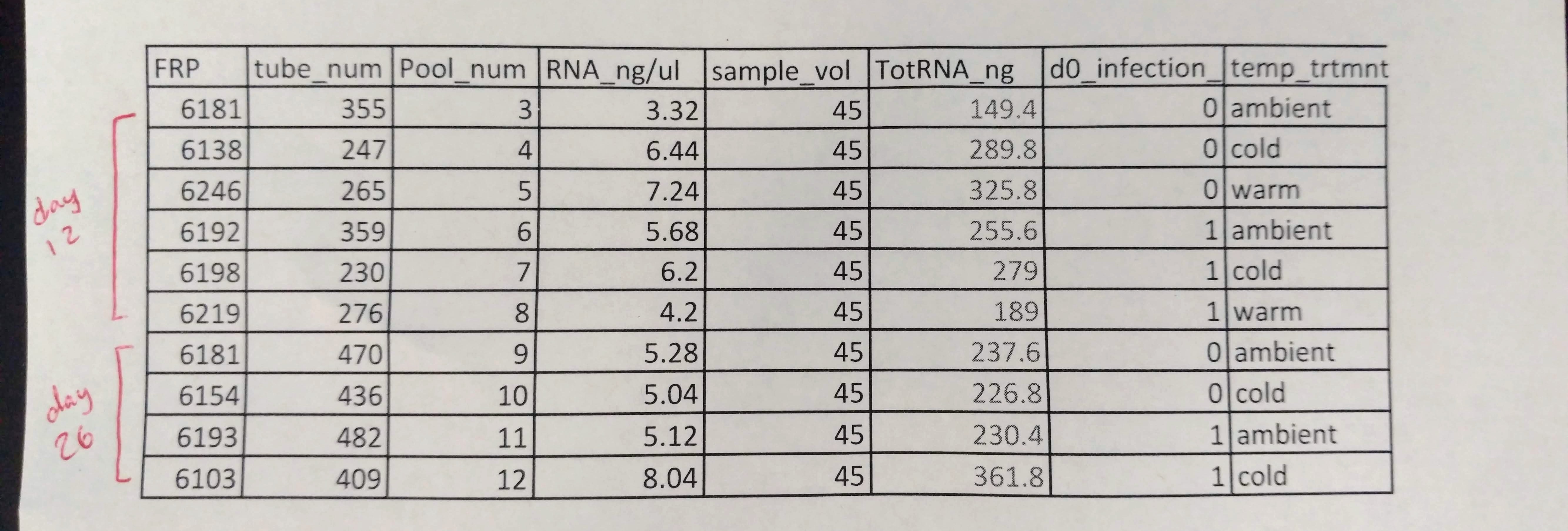
All of the RNA had some sort of undissolved/insoluble material present. Here’s an example (this is the worts of the bunch – others did not have such large/dense pellets):
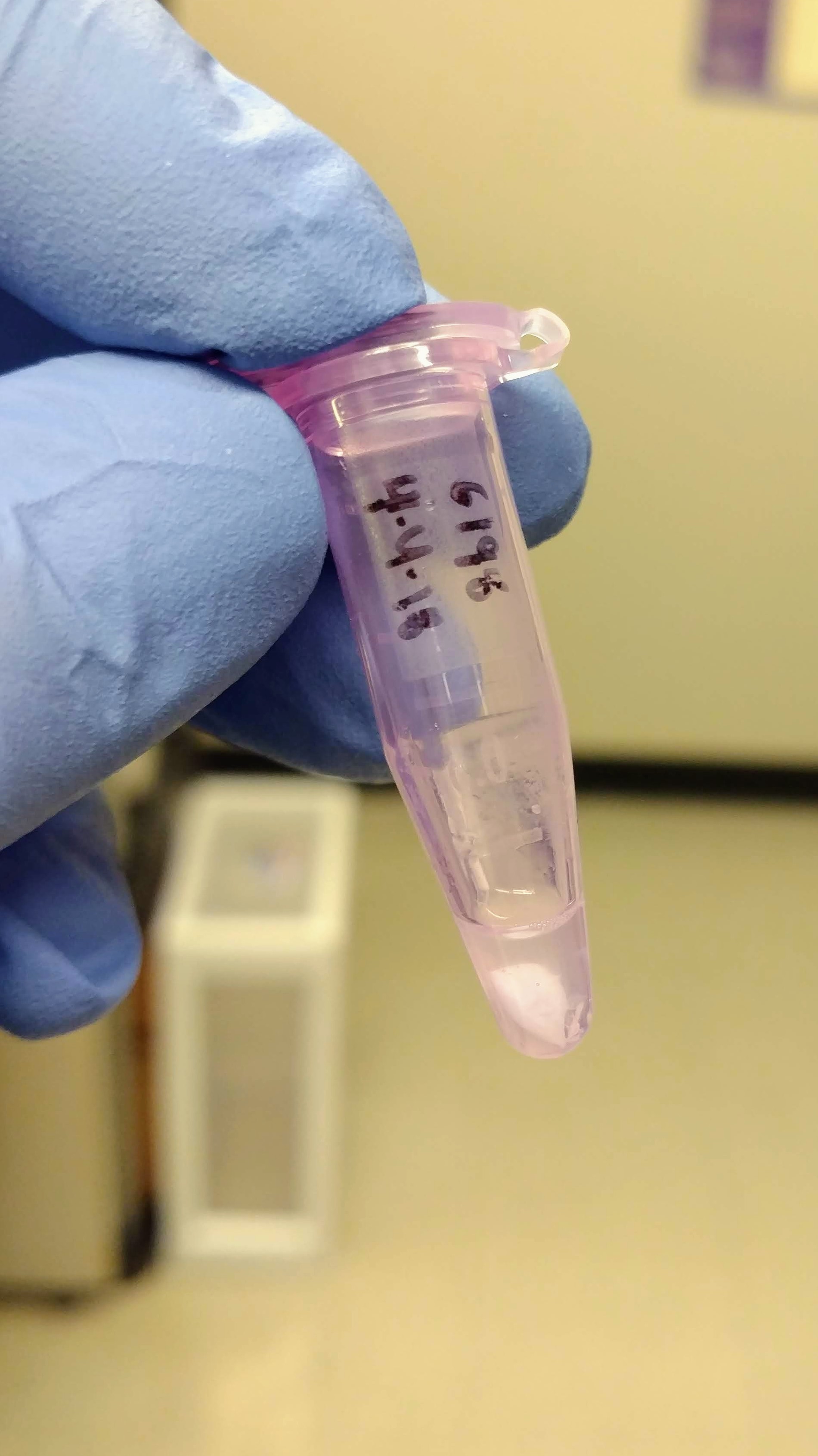
Samples were cleaned up using the [RNeasy Plus Mini Kit (Qiagen)]. Added 350uL of Buffer RLT Plus (no beta-mercaptoethanol added) to each sample, vortexed, and then processed according to the manufacturer’s protocol (skipped gDNA Eliminator spin column step).
Samples were eluted with 30uL of nuclease-free water.
Samples were quantified using the Roberts Lab Qubit 3.0 with the RNA High Sensitivity asssay (Invitrogen). Used 5uL of sample for measurements.
Samples were also assessed with the Roberts Lab NandoDrop1000.
Samples were recovered from the pedestal after measurement.
RNA was given to Grace for storage at -80C.
RESULTS
Qubit measurements (Google Sheet):
– 20180731_qubit_RNA_crab_cleanup
NanoDrop Table:
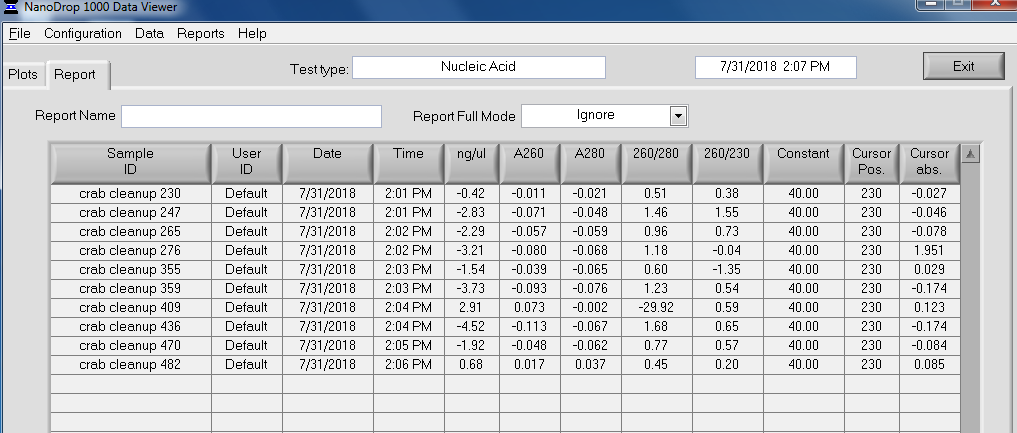
All concentrations were too low for detection via NanoDrop.
Qubit quantification indicate yields ranging from ~25ng to ~192.5ng.
Will share info with Grace and let her compare these numbers to her original concentrations to see if there’s any differences.
Regardless, based on my earlier RNA isolation today, these samples should now be much cleaner and we should be able to trust the Qubit quantifications.
